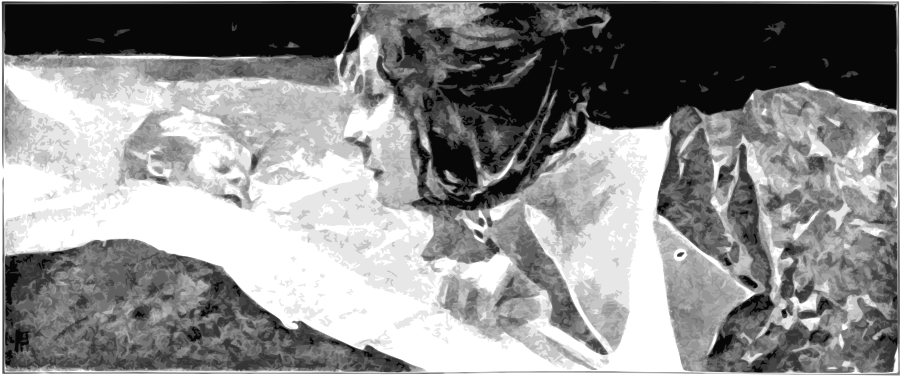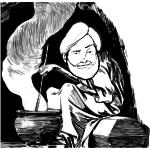Human of Inquest
The Humans of Inquest are the primary sentient Species living on Inquest with a multitude of different Forms.
In addition, displaying restraint, empathy and having dreams are regarded as Humans most treasured competences.
Differentiation
There are four major Variants of Humans currently existing on Inquest which are designated as "major Species" that behave more like additional genders.
Avres
Most people on Inquest identify as this Species. They vary greatly in size and color and usually don't display the distinct features of the other species.
Some parental combinations (usually because of the involved cultural imprinting) ensure that distinct features are present in a person, such as pointy ears, protruding canine teeth or increased facial hair growth.
Dwarves
Dwarves are usually only half the size of common Avres but retain the same proportions. They have thick bushy hair over most of their body, that is also of great cultural importance in many dwarven societies.
Elves
The lanky bodies and long tender arms of Elven make them agile acrobats, best suited for the traditional tree-loving life.
Their distinct pointy ears are expressive and extremely mobile in comparison to other Species.
Orces
Persons that call Orces their ancestors are usually quite muscular and gain weight easily. Protruding canines and a flat nose are telltale signs for one's heritage.
Minor Species
In addition, there have been and probably will be groups of people that through Magic introduce new seemingly distinct Species by spontaneous polymorphism or straight up curses.
The latter was more prominent before the Last Day of the Great Order. People with sheep horns, white wings, hooves, smooth tails, glowing or unusual number of eyes weren't exactly common but not unheard of.
Most of these special bodily features got lost through the generations or are only present in an almost imperceptible manner.
Species Names
The Species Names don't fit their respective native tongues, which support the assumption that their source is likely of magical nature.
More facts supporting this assumption are:
- No language contains different words to describe its main or another species
- The Word Avres means "Ordinary People". It appears in all Languages, translates to the same thing and is used in the same manner.
- Avres and Orces are probably adjusted pronunciations (and might have followed the assumed pattern of having a "ves" suffix) as the supposedly original version of "Orcves" is awkward to say with protruding canine teeth.
Evolution
Humans do not appear to have followed the same pattern of changing by trial-and-error over countless generations as many fossils, skeletons and deposits found in the soil, attest for animals and plants.
Researchers of the shattered History of Island Inquest have since come to the conclusion that what today is understood as a Human can't have much to do with what has lived on the Island for millennia, and that the very nature of the shattered History has to be the reason for the lack of information about what came before.
The latest theory accepted by a bulk of current scholars is that Humans are a purely artificial Species that had been created through the use and abuse of Wishes.
There are three big counterarguments to this theory:
- The Age of Wishes lies only about 2000 years in the past, which would make humans a quite recent invention, despite there being depictions of humans that must be older than the First Wish.
- Only a fabled perfect Wish could have had the Power to change, replace or remove what came before so completely, which is a thing impossible to achieve (see Fouled Wishes).
- If there already had been a cataclysmic event in recent history, why was the Great Order hellbent on having another one just thousand years after it must have happened?
Debates and Discussions in the usual scholarly circles about the implications and possible meanings of these Theories, if they were thought through to their logical ends, quickly leads to behavior that is more commonly attributed to a rough day at the schoolyard.

Basic Information
Anatomy
Humans have a head which via the neck is attached by the shoulders to the torso.
This has generally proven to be a quite useful design, especially with the addition of a lower body and hip that introduce two protrusions called legs. Those are commonly used for locomotion.
Tree's must've felt quite smug watching the first humans crawl around on their knees and hands, falling over all the times.
Their barky grin soon vanished from their knotty faces when they realized that those bendy knee-thingies let you get up and grab an axe.
Because life would be quite miserable just being able to walk around and complain, someone thought it a good idea to increase symmetry and add similar extremities to the shoulders.
That same being didn't want to make it too uniform though and decided that two roughly ramp shaped feet should hold everything up. Coming back to the grasping after stuff, five sausage-shaped protrusions were added to one side of a disc that builds hands.
Especially before knowing how to use the lower appendages it's quite helpful to have those upper ones for all-terrain movement.
Genetics and Reproduction
Growth Rate & Stages
All types of Human follow the same basic pattern of three separate stages: Childhood, Adolescence, Adulthood.
Ecology and Habitats
The optimal environment for all species is 22° Celsius, a light breeze on a sunny day with light cloud cover.
Still, they can thrive in dark forests and deep beneath the Sofrantosti mountain-range.
Dietary Needs and Habits
All Humans are omnivores with culture-specific diets.
Traditional Elves prefer to only eat unprocessed comestibles (both plant and animal life), modern Orces live mostly vegan as was natural for their ancestors and Dwarves unaccustomed to surface-food rely on Alcohol to soothe their digestive systems.
Additional Information
Perception and Sensory Capabilities
Most humans have nearly identically sensory capabilities, differences can develop through cultural conditioning, diet or magic.
Traditional dwarves find directions by the smell and taste of the surrounding air, Elves that grew up in native forests have a great ear for disturbances in sound patterns and the special eyes of orces allow them to focus on things far beyond the sight of all other species.
Civilization and Culture
History
During the Hostageholding of 1804, it was specified that all Humans are of the same Species with Groups that are similar to a point of creating a Subset, be named as a related or ancillary Species.
This Decision made it easier to talk about a specific Group of People who shared the same Physiology, Anatomy and Morphology without having to invent new terms or to rhetorically traipse around the Topic.
It also fit the way the Public already separated the major Cultural Groups which made Adoption of the Definition more efficient without adding artificial boundaries.
Another Declaration of similar Magnitude followed Suit, with Representatives of the Undead of Inquest declaring their Wish to not be included into this Definition.
This move was spearheaded by the Conclusionist Faction within the Undead with most Continuists not caring either way.
Common Knowledge treats Undead like a Sister-in-Law, she's still Family, just not related.





I really like the idea that 'human' is more of an umbrella term in your world. Not sure why, but the anatomy section made me laugh a little. I think 'ramp-shaped' is a great descriptor for feet.
I'm glad that you liked it! I try to bring some humor in all my works, even if its one that needs a bit of seriousness. Thank you for your kind words, It means a lot to me! :D
Island-Inquest awaits!